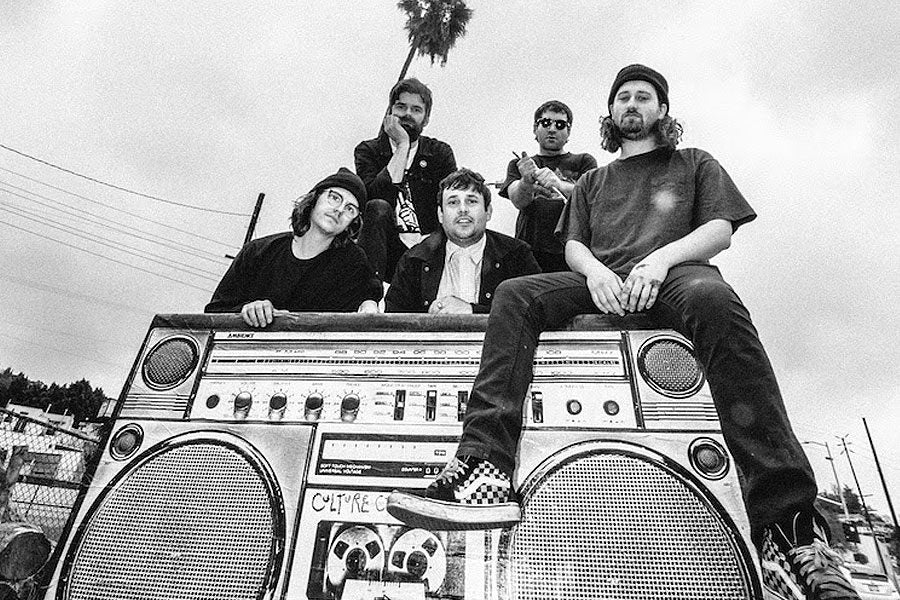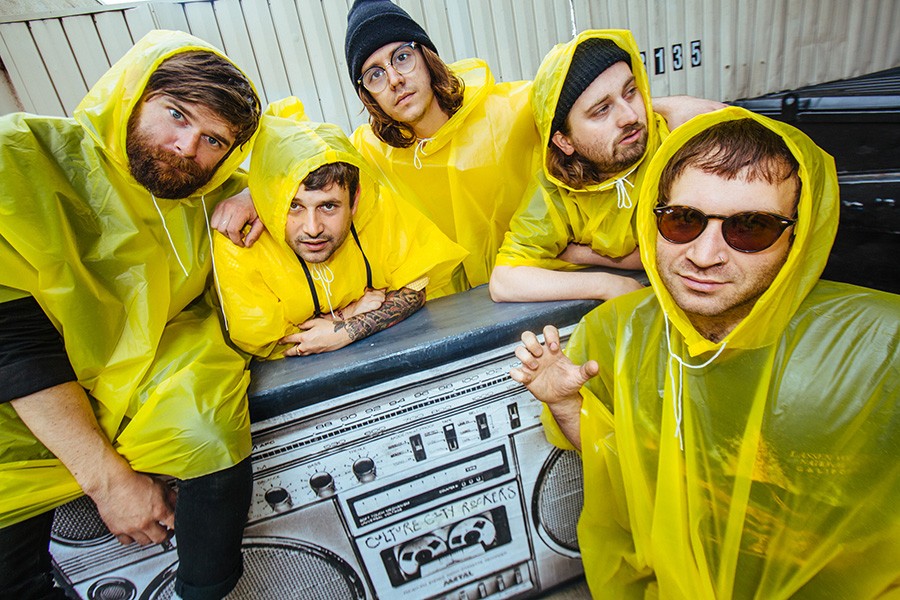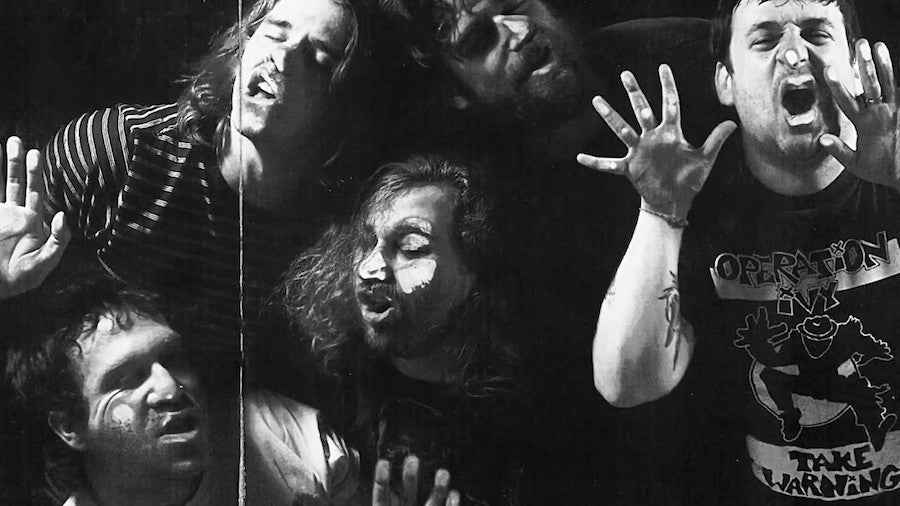
Five Minutes with Ross Traver of Culture Abuse
Our Five Minutes interview series is back. This month we talk with drummer Ross Traver of San Francisco grunge/punk outfit, Culture Abuse. Learn about his undying love for Green Day and how he prefers to record his drum parts.
By Stephanie Nicole Smith
Where did you grow up? Do you think that had an influence on your inclination to play music?
I grew up in a small suburb in the California Bay Area called Dublin. It’s about 45 minutes east of San Francisco. There wasn’t much to do there except skateboard to 7-11, drink slurpees, and play music with a small handful of friends in our garages.
My brother had the biggest impact on my music influence at a young age. I remember one morning, before he moved away for college, he left me with his cd collection. It was my first introduction to bands like Jawbreaker, The Offspring, Millencolin, Pennywise, Quicksand, and Green Day. Love you, Mitch!
The earliest I was able to play drums in the school band was 4th grade and I stuck with it all the way through high school. Every free moment I had outside of school was spent playing and practicing the drums, both by myself and with friends, either playing our favorite Green Day covers or writing our own songs. It really helped shape the way I communicate and offer creative input into the songwriting process.
What instrument did you first pick up? Did you have any formal study / how did you learn to play?
Drums. I remember around my 4th birthday receiving a pair of headphones that connected to drumsticks where I could basically air drum anywhere I wanted—I was hooked. I took it one step further and would shove balloons and pillows into big chairs in our living room to create drum sets that way. I took two lessons. But, the instructor was really old and had pads on all the heads, even those would be too loud for his ears. I just remember him getting upset at how hard I would hit. So that didn’t last. Nothing taught me how to play better than listening to Dookie [Green Day] on repeat.
Which artists were your main early influences? Do you think they have informed your sound? In what way?
I learned how to play by listening to Tré Cool. He definitely helped shape my style in a more bombastic way. I also gained a lot from listening to Dave Grohl and Taylor Hawkins. But people and things influence you everyday. It never stops and shouldn’t be restricted to, “This is the first drummer I liked so I sound like him the most.” I’m always trying to refine my style and challenge myself to learn more. Every musician should!
 Photo by Alice Baxley
Photo by Alice Baxley
What was your first instrument? What do you currently play?
It was a Ferrari Red Sunlite. Literally the cheapest kit at the local music store—probably $300—but, it came with everything I needed to make loud noises so that’s all I cared about. I currently play on a Ludwig Centennial in Silver Sparkle. Currently looking for an older Ludwig or Gretsch. I like the big vintage sound those get.
What is your favorite recording setup like?
As far as micing drums go, I feel like less-is-more. The Glyn Johns technique is great. It’s like 3 or 4 mics on the kit and captures everything you need to hear when done correctly. But it’s also totally okay to close-mic the whole kit as well for some blending options. Toms are usually the first things to get lost, so throw some md421’s on those babies and they’ll cut right through. It’s nice to have lots of options. During the tracking of Bay Dream, we bounced between two kits—a 60’s Gretsch in the live room and a smaller dimension copper kit by Q drums in the ISO. Plus, close to twelve different snare options. Not one song on that record has the same drum set.
Do you have an opinion regarding analog vs. digital recording?
We really love the way analog recordings sound. Nothing beats that natural tape saturation you get from a tape machine. We’ve recently started working with a Tascam 388, so I’m excited to explore that further. I understand why people prefer digital and see why it’s moved that way, but we’re an analog band all the way, baby!
What is your favorite studio?
We’ve recorded at a few different places in the past, Nu-Tone in the Bay Area, Sunset Sound (Hollywood), The Ship and Balboa in Glassell Park (Los Angeles). All are great studios in their own way. I don’t have a favorite in particular and can’t speak for the other guys, but I feel like what makes a space special isn’t the expensive board and overpriced outboard gear, but more the musicians you put into it and the vibe that you create and capture.
 Photo by Alice Baxley
Photo by Alice Baxley
What is your writing process?
It usually starts out with Dave bringing an idea to the group—whether it’s just a riff or a complete song, he’ll have a pretty good idea of the parts ahead of time and we sort-of jam on it for a bit and slowly massage and mold it into our own thing. Dave always brings his acoustic guitar with him on every tour. So, most of the inspiration from a Culture Abuse song is drawn from his life as a traveling musician or just however he is feeling at that moment in time.
Which players should aspiring musicians study and learn from?
Anyone they want! There’s no rules. If you hear something you like, copy it, or steal it, or make your own version of it! Who cares! All the best songs are just stolen from other great songs.
What are you currently working on?
During our downtime from tour we’re continuing to work on our next release utilizing our Tascam tape machine. It’s still in the very early stages, but we’re all really excited how it’s starting to sound. So keep your ears peeled for that.
What is in your record player today?
Dookie [Green Day].
Are we surprised?
Get updates from Culture Abuse, at @cultureabusefanzine. You can listen to their latest record above.
The Five Minutes With series is by Stephanie Nicole Smith, a visual and make up artist in Los Angeles, CA. You can find her work at stephanienicolesmith.com and follow her @stephanienicolesmith.
This interview is brought to you by Original Fuzz Magazine. Find more articles from this month's issue, here.
